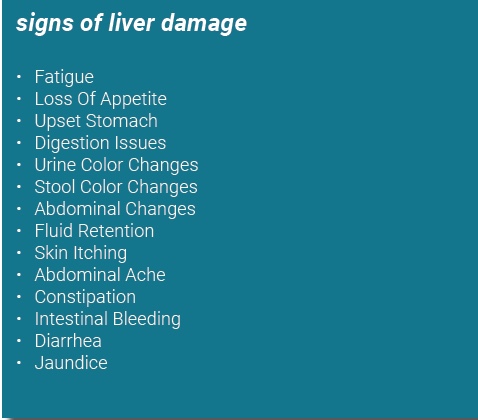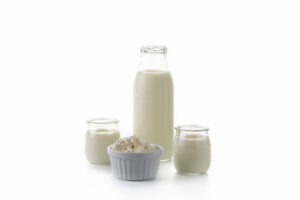
crucial for health
The liver has over 500 functions in human metabolism. These responsibilities include, among others, the formation and secretion of bile, the conversion of monosaccharides to glycogen, glycogenolysis, gluconeogenesis, fatty acid breakdown, recovery and deamination of amino acids, the formation of plasma proteins and gc proteins, vitamin synthesis as well as the detoxification, and excretion of toxic metabolites. Glycogenolysis is the biochemical breakdown of glycogen to glucose whereas glycogenesis is the opposite, the formation of glycogen from glucose. Glycogenolysis takes place in the cells of muscle, and liver tissues in response to hormonal and neural signals.
NAFLD is one of the most important causes of liver disease worldwide
NAFLD (Non-Alcoholic Fatty Liver Disease) is one of the most important causes of liver disease worldwide and will probably emerge as the leading cause of end-stage liver disease in the coming decades, with the disease affecting both adults and children.
The global prevalence of NAFLD is currently estimated to be 24%.
Notable toxin producers
Ammonia
A particularly toxic metabolite is ammonia, which is produced once during the bacterial degradation of proteins in the gut and in the degradation of amino acids in the liver itself. Ammonia is degraded in the healthy liver via the urea cycle to urea or detoxified via glutamic acid.
H2S
Bacteria, fungi, and actinomycetes release hydrogen sulfide during the decomposition of sulfur-containing proteins and by the direct reduction of sulfate (SO4 2-). In the body, H2S must be detoxified by oxidation. While H2S can be produced in large quantities (up to 12 liters per day) by sulfate- reducing bacteria in the colon, it is normally rapidly metabolized by a specialized detoxification system in the colonic mucosa. The small intestine is much less efficient at detoxifying this gas. If the detoxification system is overwhelmed, H2S would escape the gut to enter the portal vein. In the portal vein, a small amount of H2S is detoxified by oxygen bound to hemoglobin. The majority then enters the liver.
H2S affects the gastrointestinal smooth muscle cells and has a pro inflammatory effect.
Fructose
The alternate pathway of sugar metabolism that taxes the liver.
The small intestine and the liver
A dysfunctional autophagic mechanism leads to chronic intestinal inflammation in IBD.
The pathogenesis of the liver manifestation of IBD is related to gut inflammation that results in inflamed portal tracts of the enterohepatic circulation of lymphocytes from the gut to the liver.
the dangers of human waste
Mucosa-associated adherent, invasive Escherichia coli (E. coli), which are pro-inflammatory and resistant to killing by mucosal macrophages, may be associated with the pathogenesis of CD (Crohn’s Disease). By renaming human waste as “biosolids fertilizer,” wastewater treatment facilities, public utilities and farm supply companies that sell them apparently think it is safe to apply to farm crops.
Nearly 200 million farmers in China, India, Vietnam, sub-Saharan Africa, and Latin America harvest grains and vegetables from fi elds that use untreated human waste. Ten percent of the world’s population relies on such foods, according to the World Health Organization (WHO).
USA
In 2010, the Food Rights Network (FRN) conducted tests on “organic biosolids compost” that the city of San Francisco was distributing to local residents as natural fertilizer. The “compost” was made of sewage sludge, and was determined to contain “appreciable concentrations” of polybrominated diphenyl ether (PBDE) fl ame retardants; triclosan, a toxic antibacterial agent; and nonylphenol detergent breakdown components; as well as other chemicals. Turning sewage sludge into “fertilizer” may help keep less waste from being dumped in other places, but now much of it is being dumped on the food supply.
the liver and gc protein
The vitamin D binding protein (DBP) was initially discovered as a major liver-derived polymorphic protein and called group-specific component or Gc.
VDBP is a protein that occurs naturally in all higher order animals and is often produced by the first milk of mothers (colostrum) that helps boost the immunity of their newborns. The presence of DBP has been demonstrated in different body fluids (serum, urine, breast milk, ascitic fluid, cerebrospinal fluid, saliva and seminal fluid) and organs (brain, heart, lungs, kidneys, placenta, spleen, testes and uterus).
Serum levels of Gc-globulin are often markedly reduced in liver conditions and the reduction correlates with the severity and the acuity of liver disease, since Gc-globulin concentrations were lowest among patients with ALF (acute liver failure), a condition characterized by massive hepatic necrosis. Patients with ALF often develop
• renal failure
• arterial hypotension
• severe infections
• and occasionally pulmonary dysfunction
In general, total Gc-globulin levels are decreased in all patients with hepatotoxicity. Patients with ALF have total Gc-globulin concentrations of approximately 100 mg/L which is less than one third of normal values.

date nut muffins
Date Nut Muffins are a classic British teatime treat made with sweet dates and toasted walnuts.
Date nut muffins are a handy variation on date nut bread, which originated in Great Britain (specifically Scotland) as a tea time treat. This recipe uses a small amount of brown sugar.
Bovine colostrum ameliorates diarrhea in infection with diarrheogenic E. coli, Shiga toxin-producing E. coli and E. coli expressing intimin and hemolysin it supports wound healing and also the regeneration of damaged intestinal mucosa. BCO (bovine colostrum oligosaccharide) dramatically reduced the cellular invasion and translocation of C. jejuni, in a concentration dependent manner. Periodate treatment of the BCO prior to inhibition studies resulted in a loss of the anti-infective activity of the glycans suggesting a direct oligosaccharide-bacterial interaction. This was confirmed when the BCO completely prevented C. jejuni binding. *Traveler’s diarrhea is usually caused by Escherichia coli. According to M. M. Levine (Travelers’ Diarrhea: Prospects for successful immune prophylaxis. Sand. J. Gastroentrol. 18:121-124, 1983, suppl. 84), this is the bacteria that causes 22-75% of the Travelers’ diarrhea cases that occur in 29-57% of the travelers to less-developed countries.
Remember, no more than 6 teaspoons (25 grams) of added sugar per day for women and 9 teaspoons (38 grams) for men. The AHA limits for children vary depending on their age and caloric needs, but range between 3-6 teaspoons (12 – 25 grams) per day. Children under two should have zero grams of sugar per day.
If you like natural health tips like the ones above you can learn more in Immune For Life
